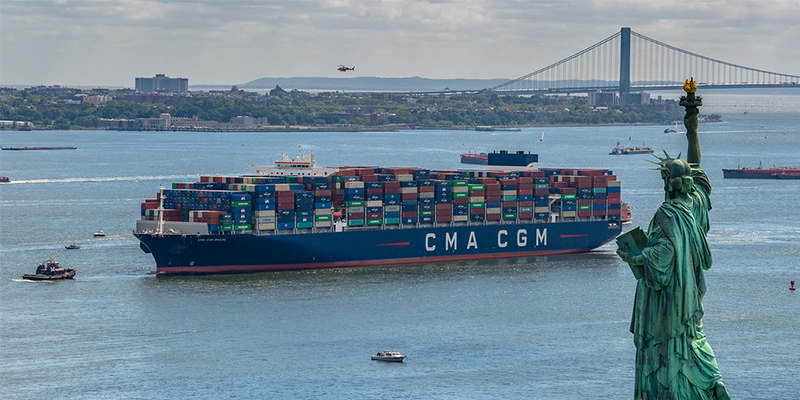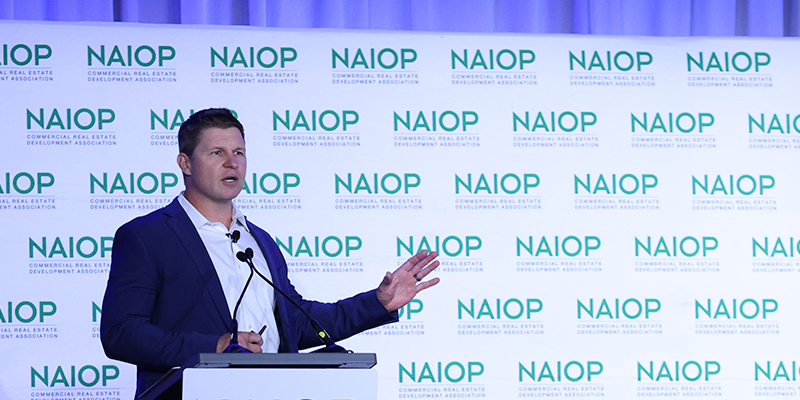Unprecedented demands on the global supply chain over the last few years have led to shipping delays and widespread headaches, but also to creative solutions and collaboration. Attendees at NAIOP’s I.CON East: The Industrial Conference in Jersey City, New Jersey, this week viewed supply chain solutions in action during a waterside tour of the Port of New York and New Jersey.
The Port of New York and New Jersey is the largest port on the East Coast and third largest in the U.S., with six marine terminals, 3,000 acres of waterfront property and port-wide intermodal rail facilities. The port provides access to 46.3 million consumers within a four-hour drive. In addition, the port has one billion square feet of warehouse and distribution space within 50 miles. It handled 7.5 million TEUs (twenty-foot equivalent unit, a unit of measurement used to determine cargo capacity for container ships and terminals) in 2020.
The port authority was deemed an “essential business” when the COVID-19 pandemic began and that helped in keeping traffic flowing through the port. The pandemic drove a sharp increase in consumer demand for goods. To keep up, retailers have shifted from “just-in-time” to “just-in-case” inventory strategies.
The Port of New York and New Jersey handles much more than shipping containers. There are three auto processors, two cruise terminals, and various bulk and breakbulk cargo including scrap metal, Belgian block, edible oils, orange juice and cement.
A typical container ship passing through the port measures 14,000 TEUs – close to the length of four football fields. Previously, the standard “workhorse” container ship at the port measured 8,000 TEUs.
The tour passed under the Bayonne Bridge, once the world’s largest steel arch bridge. When the bridge was raised to accommodate larger post-Panamax ships, a new roadway was built 64 feet above the bridge’s existing roadway to allow traffic to continue flowing across the bridge during construction.
Unfortunately, congestion continues in ports across the country; some ships are choosing to spend an extra week on the water to dock in New York and New Jersey rather than wait in lengthy port traffic to unload on the West Coast. Companies calculate that the extra wait time still saves them time in getting their cargo to consumers in the middle of the U.S. compared to waiting at the backlogged West Coast ports.
This post is brought to you by JLL, the social media and conference blog sponsor of NAIOP’s I.CON East 2022. Learn more about JLL at www.us.jll.com or www.jll.ca.









